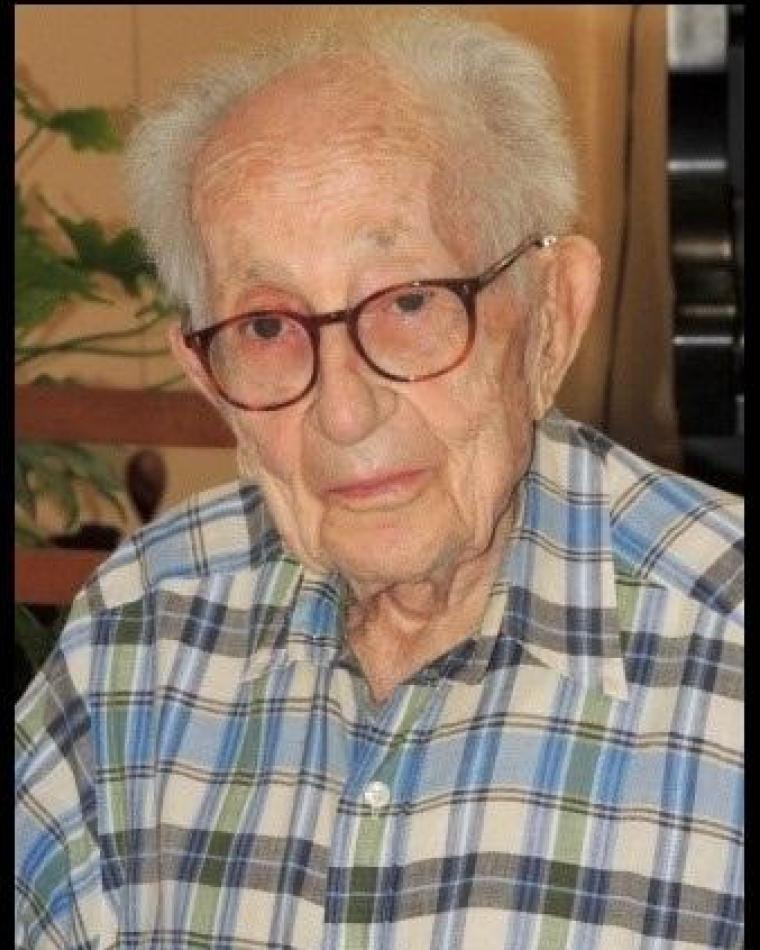
Edgar A. Edelsack
Edgar A. Edelsack
Contact Menu
Remembering Edgar A. Edelsack
May 5, 2017 (PO58). Edgar A. (Ed) Edelsack was a physicist in the fields of nuclear physics, solid state physics and applied superconductivity who, in the second half of the 20thcentury, distinguished himself as one of leading supporters of superconductivity in the United States. He died April 4, 2017, of pneumonia at the age of almost 93.
Ed was born on June 14, 1924, in New York City, where he also attended high school and the New York University (NYU, 1941 - 1943). He was inducted into the US Army in 1943. While in military service, he was trained in mechanical engineering at Washington State College (now the Washington State University). He then served in the European war theater--Ardennes, the Rhineland and Central Europe—as a gun crewman in the 11thArmy Division, 491stArmored Battalion. An event that deeply marked him was his service in the newly liberated Mauthausen Nazi concentration camp, where for some days he assisted the starved and emaciated former inmates1.
After the war, Ed returned to the study of physics at the University of Southern California (USC) and graduated there with a BS in 1948. He continued with graduate study at USC until 1950 and completed the class work for a Ph.D. In 1950, he also spent some time at the Oak Ridge Institute of Nuclear Studies.
From 1949 until 1953 Ed was employed at the Emery Tumor Institute in Los Angeles, CA where he constructed a 2 MeV electron accelerator used for the treatment of cancer patients and supervised a radioactive isotope laboratory capable of handling intense radioactive sources. Subsequently, 1953-1957, he worked at the Naval Radiological Defense Laboratory in San Francisco, CA. There, he managed the 2 MeV proton/electron accelerator and supervised physicists and engineers engaged in fundamental and applied nuclear physics and radiation biophysics research. Between 1957 and 1967, Ed worked for the Office of Naval Research (ONR) in San Francisco, where he was responsible for technical reviews and evaluation of over thirty Navy-supported physics and biophysics projects at academic and industrial laboratories.
Finally, in 1967, Ed moved to Arlington, VA, to join the Physical Sciences Division of ONR. Once there, he soon started the ONR superconductive electronics program of which, in the role of a Senior Program Manager, he remained in charge until his retirement in 1986. During that time he served as a catalyst in starting the International Cryocooler Conference and actively supported newly established conference forums, such as the Applied Superconductivity Conference (ASC). In 1986, as that Conference Chair, he organized the ASC in Baltimore, MD, celebrating the 75thanniversary of the discovery of superconductivity.
While very active in the area of applied superconductivity, Ed considered it essential to also provide support to basic science. Although one may think that ONR should focus only on specific applications directly related to Navy’s needs, Ed understood that ONR, the oldest scientific agency in the United States, should have a vital interest in supporting the development of basic science. Ed interpreted his area of responsibility broadly, even though this was not always an easy task2.
One of Ed’s proudest achievements at ONR was his support and initiative for research in SQUID (superconducting quantum interference device) magnetometry, which created a bridge between superconductivity and biophysics. In 1969 at Ed’s suggestion, and with ONR support, a magnetically shielded room was constructed at MIT (Massachusetts Institute of Technology). In it, the research team of David Cohen and James E. (Jim) Zimmerman recorded the very first magnetocardiograms3of the heart thanks to the use of a SQUID magnetometer newly developed by Jim. This led directly to the establishment of biomagnetism as a research area and clinical discipline. Ed authored and co-authored more than 50 papers, as well as co-edited a two-volume book edition on superconductivity (The Science and Technology of Superconductivity, Plenum Press, 1973).
Once retired, Ed served as adjunct professor in the School of Engineering at George Washington University (GWU) and as a consultant with the Institute of Defense Analysis and HYPRES, Inc., where he served later as Chairman of that company’s Scientific Advisory Board. He volunteered his time at GWU to enhance programs for science teachers in public schools, as well as directly in local schools themselves.
In 2002, Ed became the very first awardee of the newly established IEEE Max Swerdlow Award for Sustained Service to the Applied Superconductivity Community, one of the prestigious awards sponsored by the IEEE Council on Superconductivity.
Ed is survived by his wife of 35 years, Charlotte Nusberg, son and daughter-in-law, and two grandchildren. As a WWII veteran, Ed will be interred at Arlington National Cemetery.
We thank the widow, Mrs. Charlotte Nusberg, for providing and verifying many biographic details. Her help was invaluable
Alex Braginski, Juelich Research Center
Vladimir Kresin, Lawrence Berkeley National Laboratory
Marty Nisenoff, formerly Naval Research Laboratory (retired)
Bruce Strauss, President, IEEE Council on Superconductivity
1In his later years, he both lectured and was interviewed on what he witnessed there. He is honored as a liberator by the US Holocaust Museum in Washington, DC.
2Read more on Ed’s support for basic science
3Slightly later, the first magnetoencephalograms of the human brain were also recorded by them.